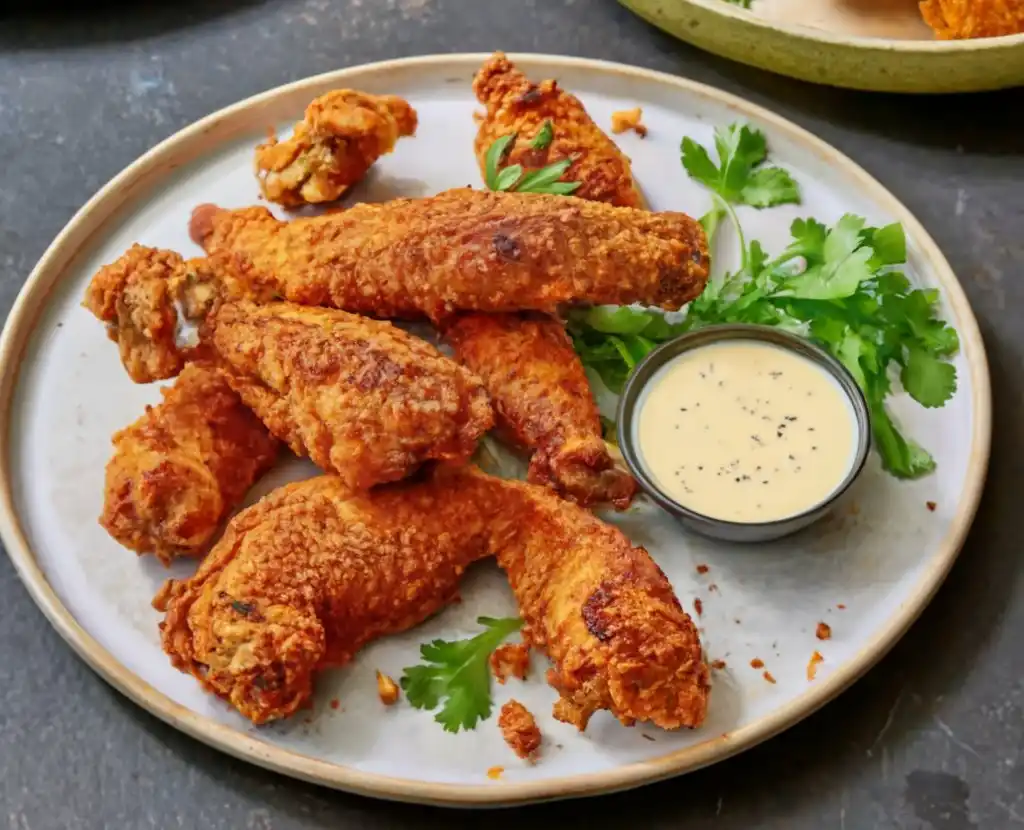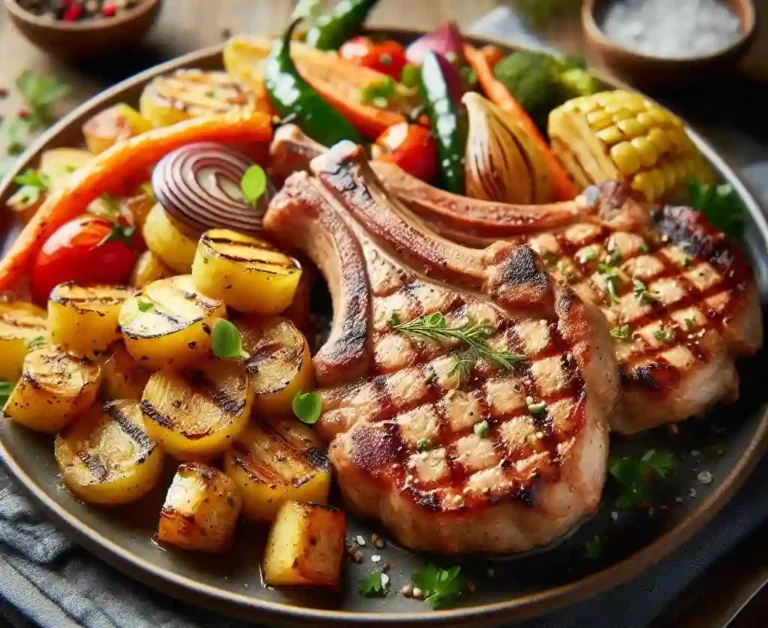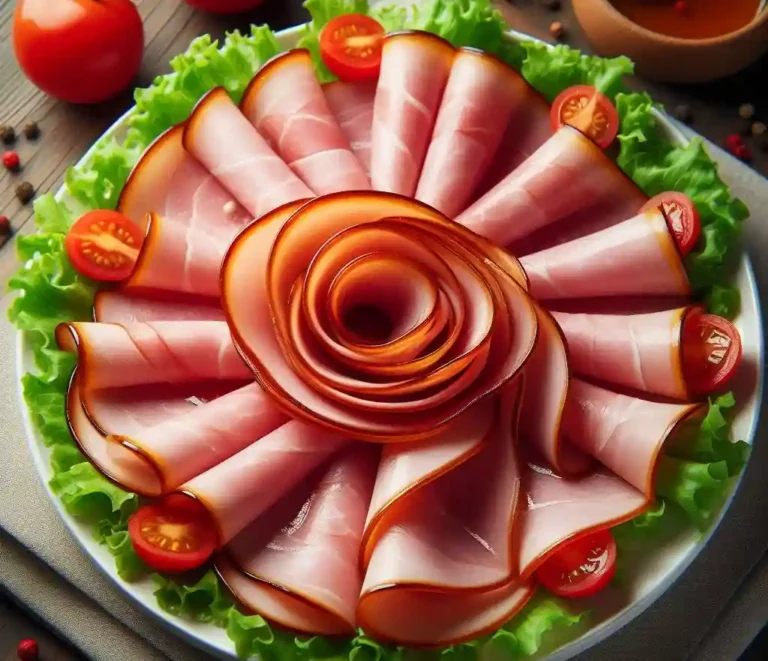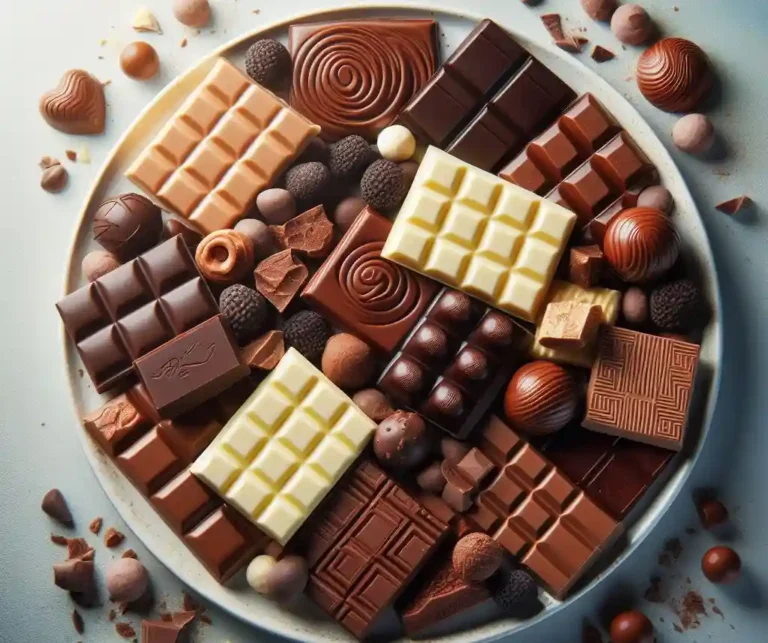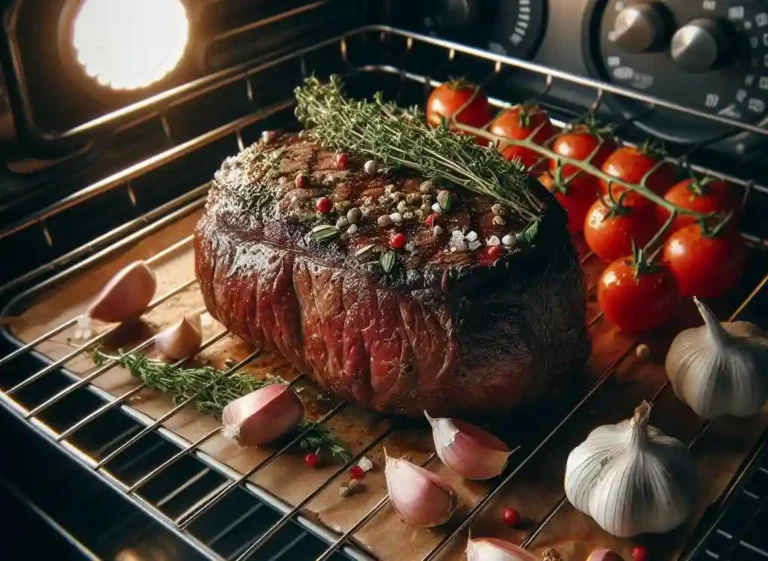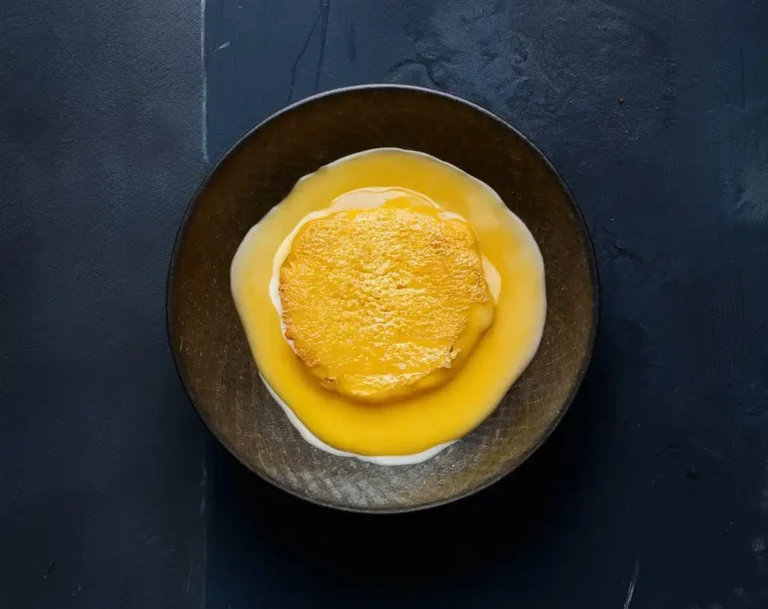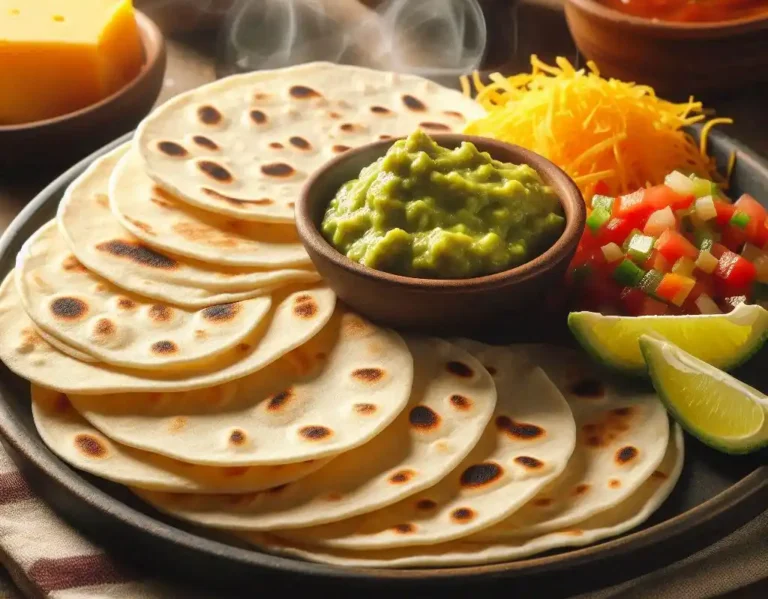How to Fry Chicken Without Flour: Flourless Frenzy
Frying chicken without flour may seem like a culinary contradiction, but trust us, it’s a game-changer.
By ditching the traditional flour coating, you can achieve a crispy, golden exterior and a juicy interior without the extra carbs and calories.
The secret lies in clever substitutions and clever techniques, which we’ll reveal in this post.
How to Fry Chicken Without Flour: A Quick Overview
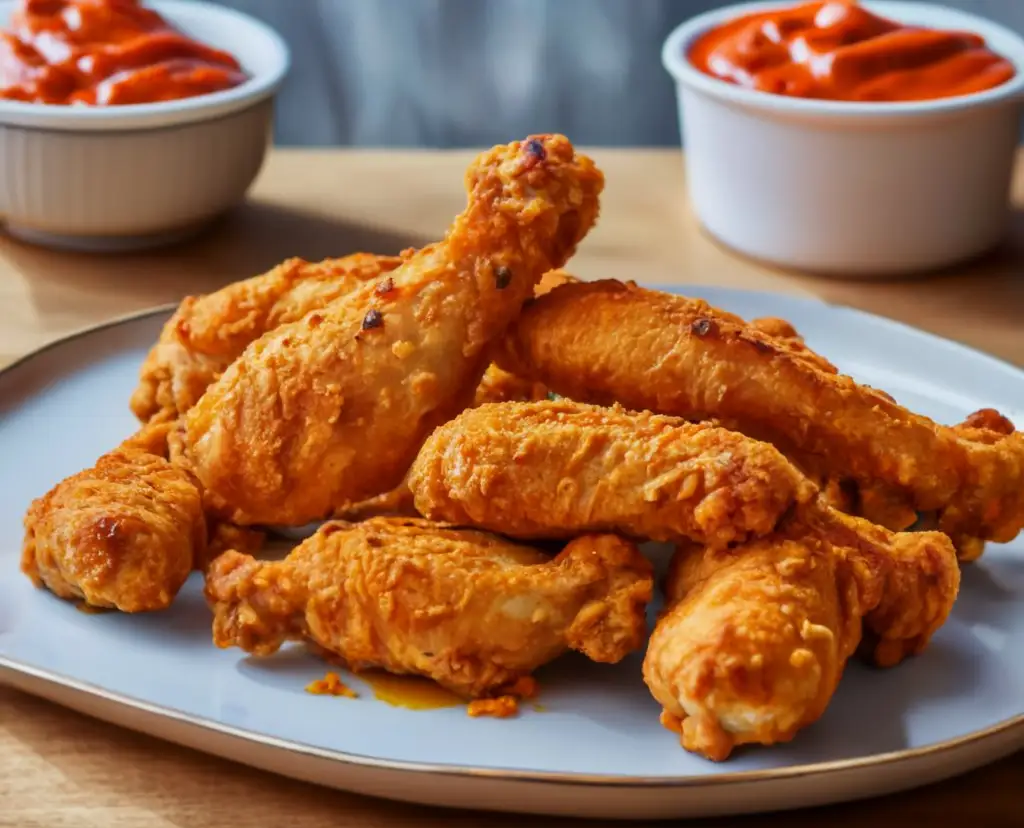
Alternative Coatings:
- Cornstarch: Provides a crispy exterior and can be seasoned with spices and herbs for added flavor.
- Panko Breadcrumbs: Light and airy, these Japanese-style breadcrumbs create a crunchy coating without the need for flour.
- Potato Starch: A gluten-free option that yields a crispy exterior and can be used in combination with spices and herbs.
- Egg Whites: Whip up egg whites with a fork, then dip chicken pieces in for a protein-rich coating.
- Grated Nuts or Seeds: Almonds, pecans, or sesame seeds can be used to create a crunchy, nutty coating.
Tips for Frying Without Flour:
- Pat dry the chicken: Remove excess moisture from the chicken to help the coating adhere.
- Use the right oil: Choose an oil with a high smoke point, such as peanut or avocado oil, for optimal frying.
- Don’t overcrowd: Fry in batches to prevent the chicken pieces from sticking together.
- Don’t overcook: Fry until the chicken reaches an internal temperature of 165°F (74°C) to ensure food safety.
Additional Tips:
- Marinate or brine: Soak the chicken in a flavorful liquid before frying for added moisture and flavor.
- Experiment with spices: Add aromatics like garlic, onion, or herbs to the coating mixture for extra flavor.
The Science Behind Flourless Fried Chicken: Understanding the Magic
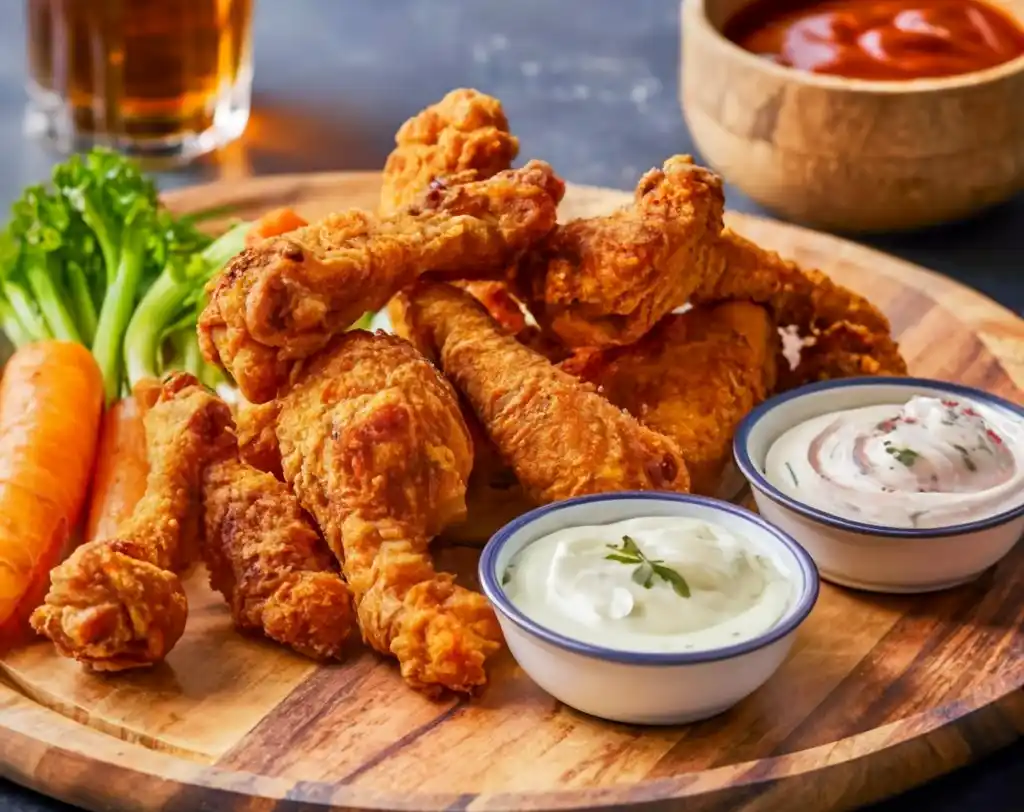
The Role of Starches:
- Gelatinization: When starches are heated, they absorb water and swell, eventually breaking down into simpler sugars. This process, called gelatinization, helps create a crispy exterior.
- Retrogradation: As the starches cool, they re-form into a crystalline structure, providing a satisfying crunch.
The Importance of Moisture:
- Moisture Content: The ideal moisture level for fried chicken is between 40% and 50%. This allows for a crispy exterior and a juicy interior.
- Moisture Migration: As the chicken cooks, moisture migrates from the interior to the exterior, helping to create a crispy coating.
The Magic of Maillard Reaction:
- Amino Acids and Reducing Sugars: When amino acids and reducing sugars combine, they react to form new flavor compounds and browning products.
- Browning and Flavor: The Maillard reaction is responsible for the golden-brown color and rich, savory flavors in fried chicken.
The Science of Crispiness:
- Surface Tension: The surface tension of the coating mixture helps it adhere to the chicken, creating a crispy exterior.
- Viscoelasticity: The combination of starches and proteins in the coating mixture provides elasticity, allowing it to stretch and contract as the chicken cooks.
The Role of Oil:
- Heat Transfer: Oil acts as a heat transfer medium, allowing the chicken to cook evenly and efficiently.
- Moisture Barrier: Oil helps to prevent moisture from escaping the chicken, keeping it juicy and tender.
Tips for Achieving Flourless Fried Chicken Perfection:
- Choose the right oil: Select an oil with a high smoke point, such as peanut or avocado oil, for optimal frying.
- Control the temperature: Maintain a consistent temperature between 325°F (165°C) and 375°F (190°C) for perfect crispiness.
- Don’t overcook: Fry until the chicken reaches an internal temperature of 165°F (74°C) to ensure food safety.
- Experiment with coatings: Try different starches, spices, and seasonings to create unique flavor profiles.
Flour Alternatives: Exploring the Best Coatings for Crunchy Chicken
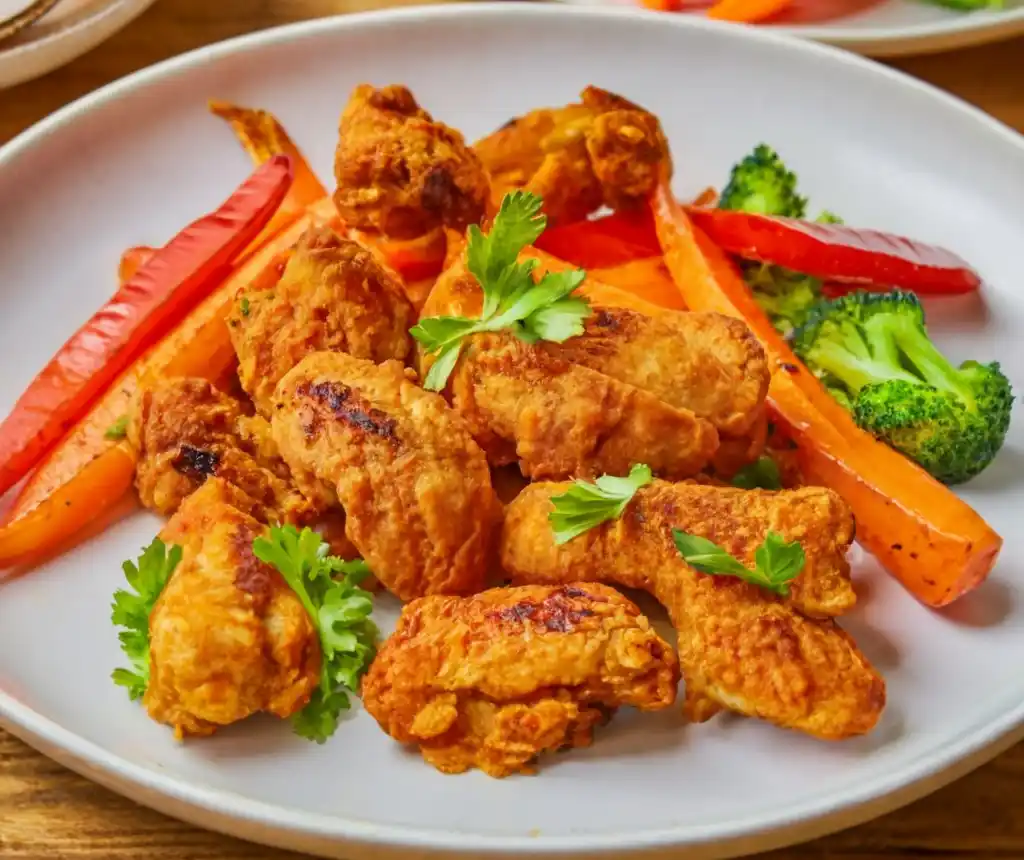
Starch-Based Coatings:
- Cornstarch: A popular choice for Korean-style fried chicken, cornstarch creates a crispy exterior and can be seasoned with spices and herbs for added flavor.
- Potato Starch: A gluten-free option that yields a light and airy coating, perfect for those with dietary restrictions.
- Tapioca Starch: Similar to cornstarch, tapioca starch provides a crispy exterior and can be used in combination with spices and herbs.
Nut-Based Coatings:
- Almond Meal: Adds a nutty flavor and crunchy texture, perfect for those looking for a gluten-free option.
- Pecan Meal: Provides a rich, buttery flavor and a satisfying crunch.
- Hazelnut Meal: Adds a nutty, slightly sweet flavor and a delicate crunch.
Seed-Based Coatings:
- Sesame Seeds: Adds a nutty flavor and crunchy texture, perfect for Asian-inspired dishes.
- Poppy Seeds: Provides a delicate crunch and a subtle nutty flavor.
- Sunflower Seeds: Adds a nutty flavor and a satisfying crunch.
Grain-Based Coatings:
- Oat Flour: A gluten-free option that provides a hearty, crunchy coating.
- Rice Flour: A light and airy coating that pairs well with Asian-inspired flavors.
- Quinoa Flour: A protein-rich coating that adds a nutty flavor and crunchy texture.
Spice-Based Coatings:
- Spice Blends: Mix and match spices like paprika, garlic powder, and onion powder to create a custom flavor profile.
- Herbs: Fresh or dried herbs like thyme, rosemary, and parsley add a fragrant flavor and aroma.
- Chili Flakes: Adds a spicy kick and a crunchy texture.
Tips for Achieving the Perfect Coating:
- Pat dry the chicken: Remove excess moisture from the chicken to help the coating adhere.
- Use the right oil: Choose an oil with a high smoke point, such as peanut or avocado oil, for optimal frying.
- Don’t overcoat: Use a light hand when applying the coating to prevent a thick, heavy exterior.
- Experiment with combinations: Mix and match different coatings to create unique flavor profiles.
The Benefits of Flour-Free Fried Chicken: Healthier and Crunchier
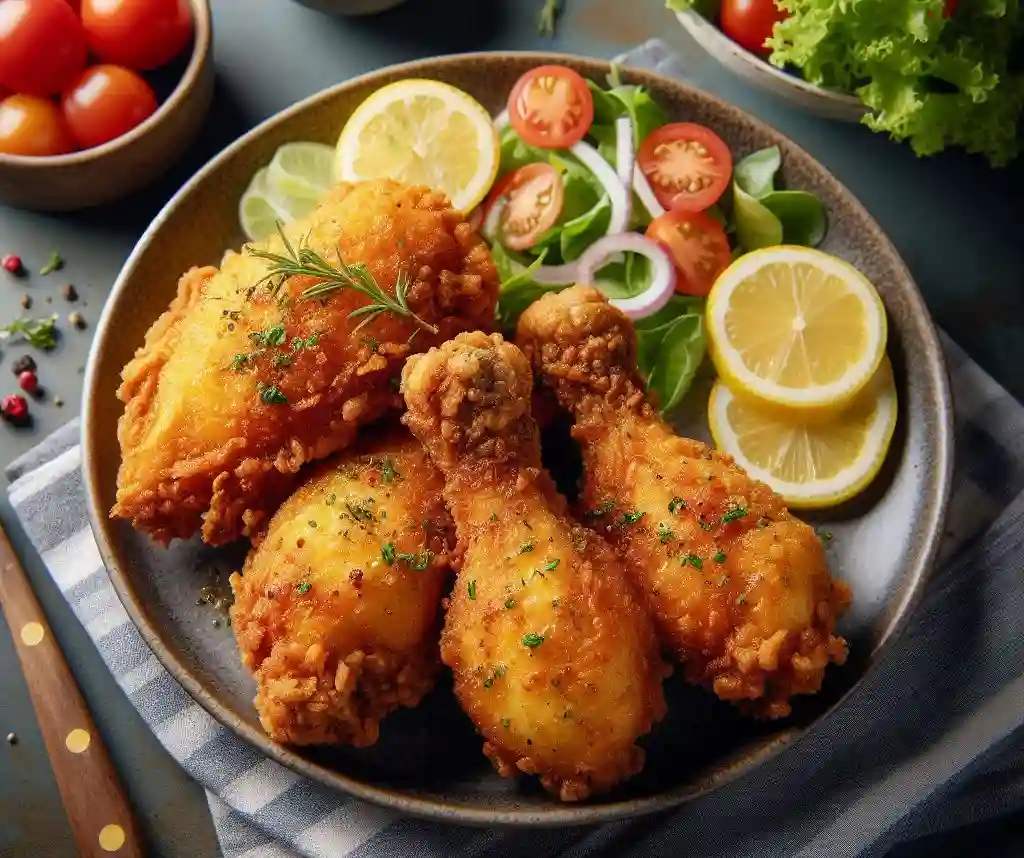
Health Benefits:
- Lower Carb Count: Flour-free coatings reduce the carbohydrate content of your fried chicken, making it a better option for those watching their carb intake.
- Gluten-Free: Many flour-free coatings are naturally gluten-free, making them an excellent choice for those with gluten intolerance or sensitivity.
- Fewer Calories: Flour-free coatings tend to be lower in calories than traditional flour-based breading, helping you keep your calorie count in check.
Crunchier Texture:
- Lighter Coating: Flour-free coatings are often lighter and airier, providing a crunchier texture without the heavy, dense feeling of traditional breading.
- Better Adhesion: Many flour-free coatings adhere better to the chicken, ensuring a crispy exterior that stays intact.
- Customizable Crunch: Experiment with different coatings to find the perfect level of crunch to suit your taste.
Increased Flavor:
- More Room for Flavor: Without the overpowering flavor of flour, you can focus on adding more herbs, spices, and seasonings to create a truly unique flavor profile.
- Enhanced Aroma: Flour-free coatings can enhance the aroma of your fried chicken, making it even more irresistible.
- Better Breading Distribution: Flour-free coatings can be seasoned more evenly, ensuring every bite is packed with flavor.
Environmental Benefits:
- Less Waste: Flour-free coatings often require less packaging and processing, reducing waste and minimizing environmental impact.
- Sustainable Ingredients: Many flour-free coatings are made from sustainable, eco-friendly ingredients, supporting a more environmentally conscious lifestyle.
Tips for Achieving Flour-Free Fried Chicken Perfection:
- Choose the right oil: Select an oil with a high smoke point, such as peanut or avocado oil, for optimal frying.
- Don’t overcook: Fry until the chicken reaches an internal temperature of 165°F (74°C) to ensure food safety.
- Experiment with coatings: Try different flour-free coatings to find the perfect combination of crunch, flavor, and nutrition.
Preparation is Key: Tips for Achieving Crunchy Chicken Without Flour
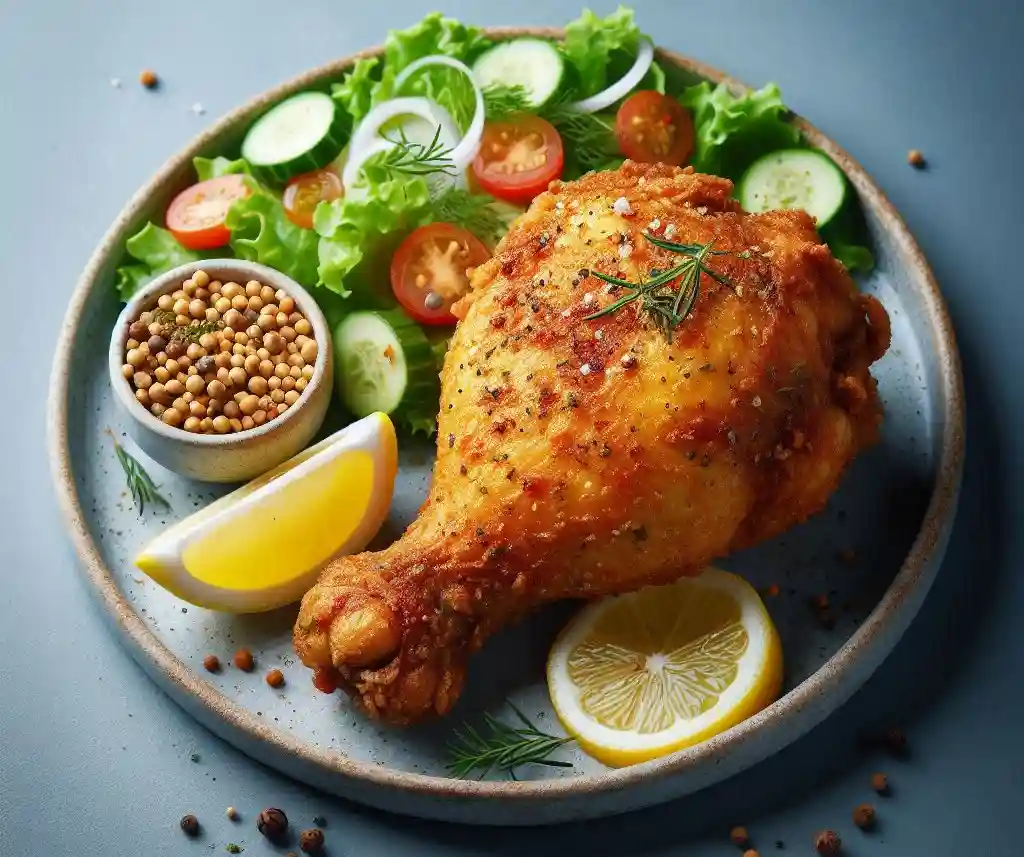
Step 1: Prepare the Chicken
- Pat dry the chicken: Remove excess moisture from the chicken to help the coating adhere.
- Season the chicken: Add your desired seasonings, herbs, and spices to the chicken before coating.
- Marinate the chicken (optional): Marinate the chicken in your favorite sauce or seasoning mixture to add extra flavor.
Step 2: Choose the Right Coating
- Select a suitable coating: Choose a coating that complements the flavor of your chicken, such as cornstarch, potato starch, or almond meal.
- Mix and match coatings: Experiment with different coating combinations to find the perfect crunch and flavor.
- Add flavor to the coating: Mix herbs, spices, and seasonings into the coating for added flavor.
Step 3: Coat the Chicken
- Use the right amount of coating: Use just enough coating to cover the chicken, but not so much that it becomes too thick.
- Coat evenly: Ensure the coating is evenly distributed to achieve a consistent crunch.
- Press the coating onto the chicken: Gently press the coating onto the chicken to ensure it adheres properly.
Step 4: Fry the Chicken
- Choose the right oil: Select an oil with a high smoke point, such as peanut or avocado oil, for optimal frying.
- Heat the oil correctly: Heat the oil to the correct temperature (usually between 325°F and 375°F) for crispy frying.
- Fry in batches: Fry the chicken in batches to prevent overcrowding and ensure even cooking.
Step 5: Drain and Serve
- Drain excess oil: Place the fried chicken on a paper towel-lined plate to drain excess oil.
- Serve immediately: Serve the crunchy chicken hot and enjoy!
Additional Tips
- Experiment with different cooking methods: Try baking or air-frying the chicken for a crispy exterior without deep-frying.
- Keep it crispy: To maintain crispiness, avoid covering the chicken or storing it in a humid environment.
- Practice makes perfect: Don’t be discouraged if your first attempts at flour-free fried chicken don’t turn out perfectly – practice makes perfect!
The Role of Marination in Flourless Fried Chicken: A Game-Changer
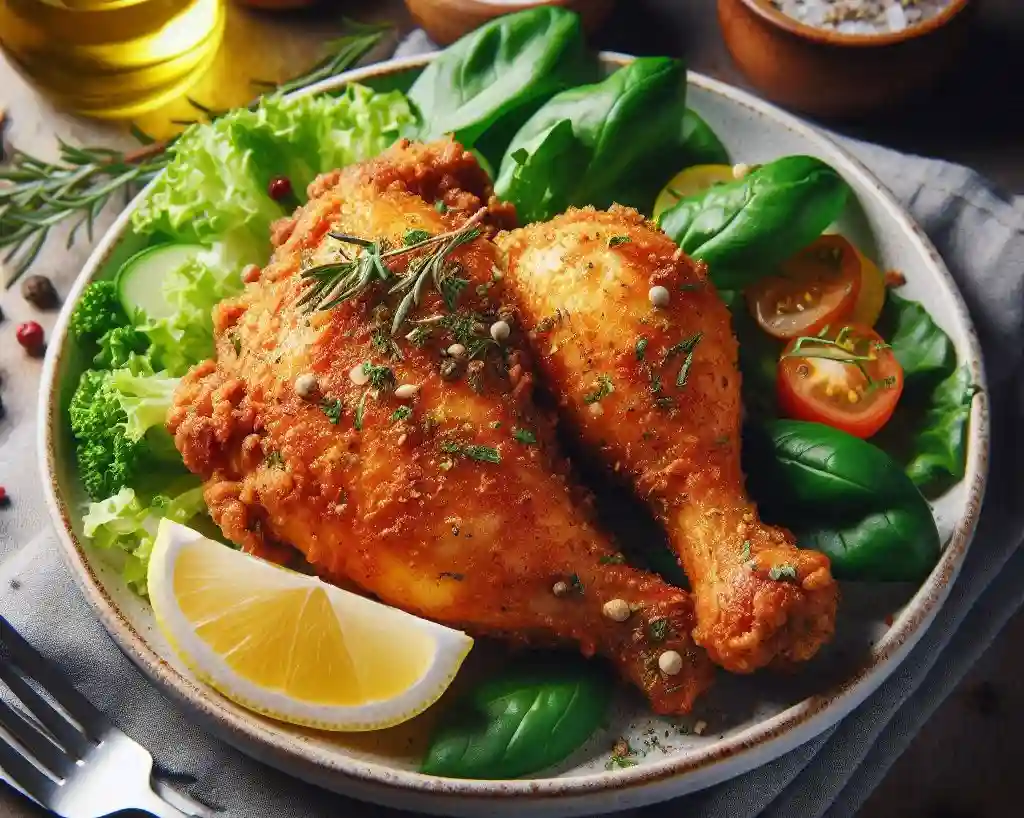
Enhanced Flavor:
- Deeper flavor penetration: Marination allows flavors to penetrate deeper into the meat, resulting in a more complex and intense flavor profile.
- Balanced flavors: Marination helps to balance the flavors of the chicken, ensuring that every bite is a perfect blend of savory, sweet, and spicy notes.
Tenderization:
- Breaks down proteins: Marination helps to break down the proteins in the chicken, making it tender and juicy.
- Reduces cooking time: Tenderized chicken cooks faster, reducing the cooking time and ensuring that the chicken is cooked to perfection.
Moisture Retention:
- Locks in moisture: Marination helps to lock in moisture, ensuring that the chicken stays juicy and tender even after frying.
- Crispy exterior, juicy interior: Marination helps to achieve the perfect balance of a crispy exterior and a juicy interior.
Improved Texture:
- Firmer texture: Marination helps to firm up the texture of the chicken, making it easier to coat and fry.
- Crispy coating: Marination helps to create a crispy coating that adheres well to the chicken, ensuring a crunchy exterior.
Tips for Effective Marination:
- Choose the right acid: Use a mild acid like lemon juice or vinegar to help break down the proteins and tenderize the chicken.
- Don’t over-marinate: Marinate for the right amount of time to avoid over-tenderizing the chicken.
- Use a flavorful marinade: Use a marinade that complements the flavor of the chicken and the desired flavor profile.
Popular Marinades for Flourless Fried Chicken:
- Buttermilk marinade: A classic marinade that adds a tangy flavor and tenderizes the chicken.
- Asian-style marinade: A marinade that combines soy sauce, garlic, and ginger for a savory and aromatic flavor.
- Spicy marinade: A marinade that adds a kick of heat with chili flakes, cayenne pepper, or hot sauce.
Breading Without Flour: The Secret to Crunchy, Golden Chicken
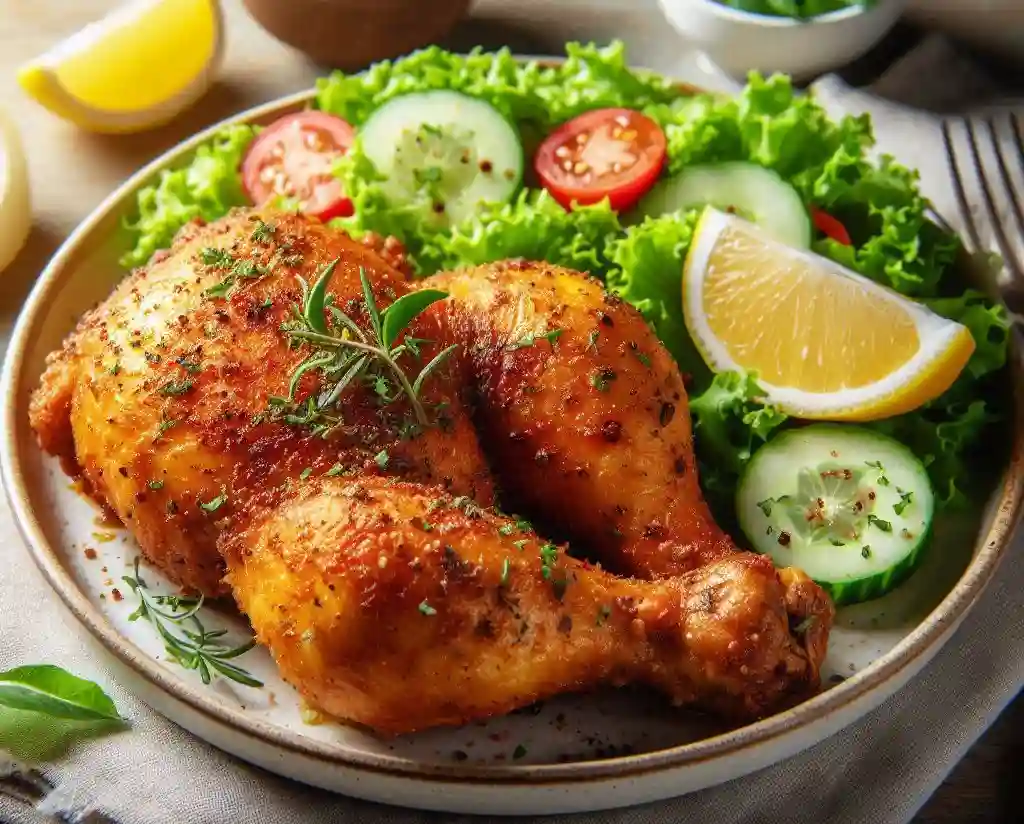
Starch-Based Breading:
- Cornstarch: A popular choice for Korean-style fried chicken, cornstarch creates a crispy exterior and can be seasoned with spices and herbs for added flavor.
- Potato Starch: A gluten-free option that yields a light and airy coating, perfect for those with dietary restrictions.
- Tapioca Starch: Similar to cornstarch, tapioca starch provides a crispy exterior and can be used in combination with spices and herbs.
Nut-Based Breading:
- Almond Meal: Adds a nutty flavor and crunchy texture, perfect for those looking for a gluten-free option.
- Pecan Meal: Provides a rich, buttery flavor and a satisfying crunch.
- Hazelnut Meal: Adds a nutty flavor and a delicate crunch.
Seed-Based Breading:
- Sesame Seeds: Adds a nutty flavor and crunchy texture, perfect for Asian-inspired dishes.
- Poppy Seeds: Provides a delicate crunch and a subtle nutty flavor.
- Sunflower Seeds: Adds a nutty flavor and a satisfying crunch.
Grain-Based Breading:
- Oat Flour: A gluten-free option that provides a hearty, crunchy coating.
- Rice Flour: A light and airy coating that pairs well with Asian-inspired flavors.
- Quinoa Flour: A protein-rich coating that adds a nutty flavor and crunchy texture.
Tips for Breading Without Flour:
- Choose the right breading: Select a breading that complements the flavor of your chicken and desired texture.
- Don’t over-bread: Use just enough breading to coat the chicken, avoiding excess breading that can make the chicken greasy.
- Press the breading onto the chicken: Gently press the breading onto the chicken to ensure it adheres properly.
Frying Techniques for Flourless Chicken: Mastering the Art
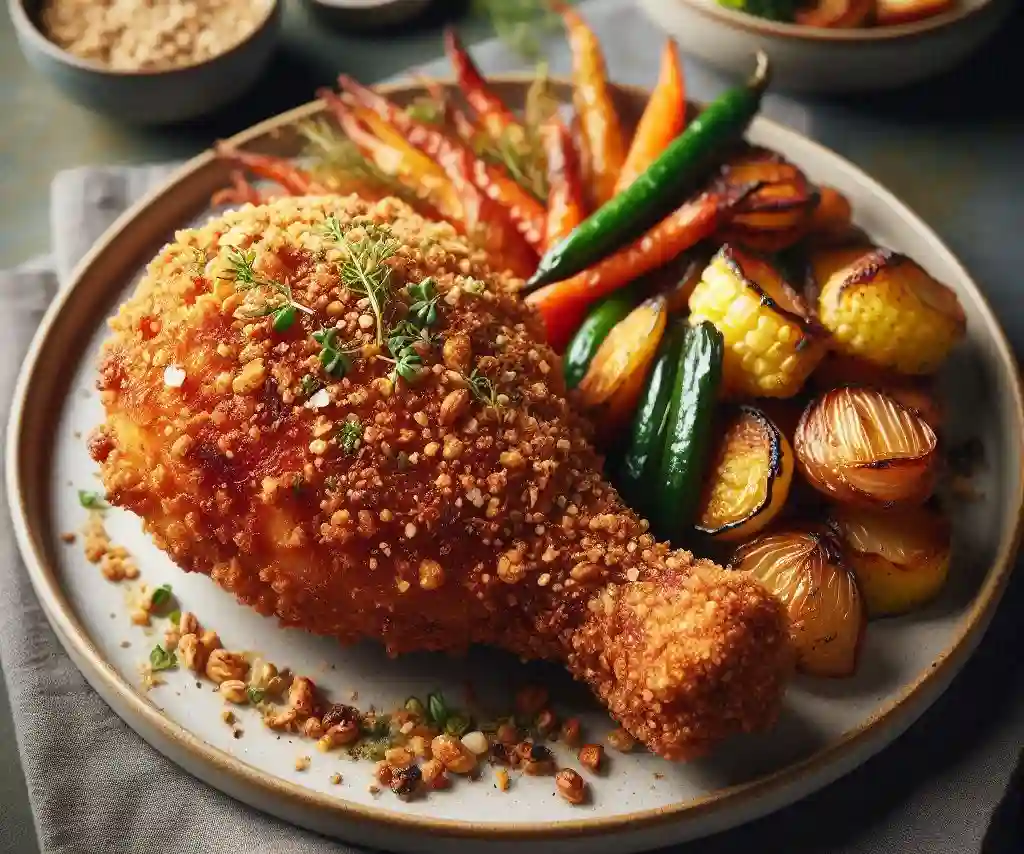
Double Frying:
- First fry: Fry the chicken at a lower temperature (around 325°F) to cook the chicken through and remove excess moisture.
- Second fry: Increase the temperature (around 375°F) to crisp up the exterior and achieve a golden brown color.
Temperature Control:
- Maintain the right temperature: Keep the oil between 325°F and 375°F to achieve the perfect crispiness and prevent burning.
- Use a thermometer: Monitor the oil temperature to ensure it stays within the optimal range.
Frying Times:
- Fry in batches: Fry the chicken in batches to prevent overcrowding and ensure even cooking.
- Fry for the right amount of time: Fry the chicken for 5-7 minutes or until it reaches an internal temperature of 165°F.
Oil Selection:
- Choose the right oil: Select an oil with a high smoke point, such as peanut or avocado oil, to prevent burning and ensure a crispy exterior.
- Use a flavorful oil: Infuse the oil with aromatics like garlic, ginger, or herbs to add flavor to the chicken.
Drainage Techniques:
- Drain excess oil: Place the fried chicken on a paper towel-lined plate to drain excess oil and prevent sogginess.
- Use a wire rack: Place the fried chicken on a wire rack to allow air to circulate and prevent steam from building up.
Tips for Frying Flourless Chicken:
- Pat dry the chicken: Remove excess moisture from the chicken to help the breading adhere and prevent steam from building up.
- Don’t overcrowd: Fry the chicken in batches to prevent overcrowding and ensure even cooking.
- Don’t over-fry: Fry the chicken until it reaches an internal temperature of 165°F to prevent overcooking.
Troubleshooting Common Issues: Ensuring Success with Flourless Fried Chicken
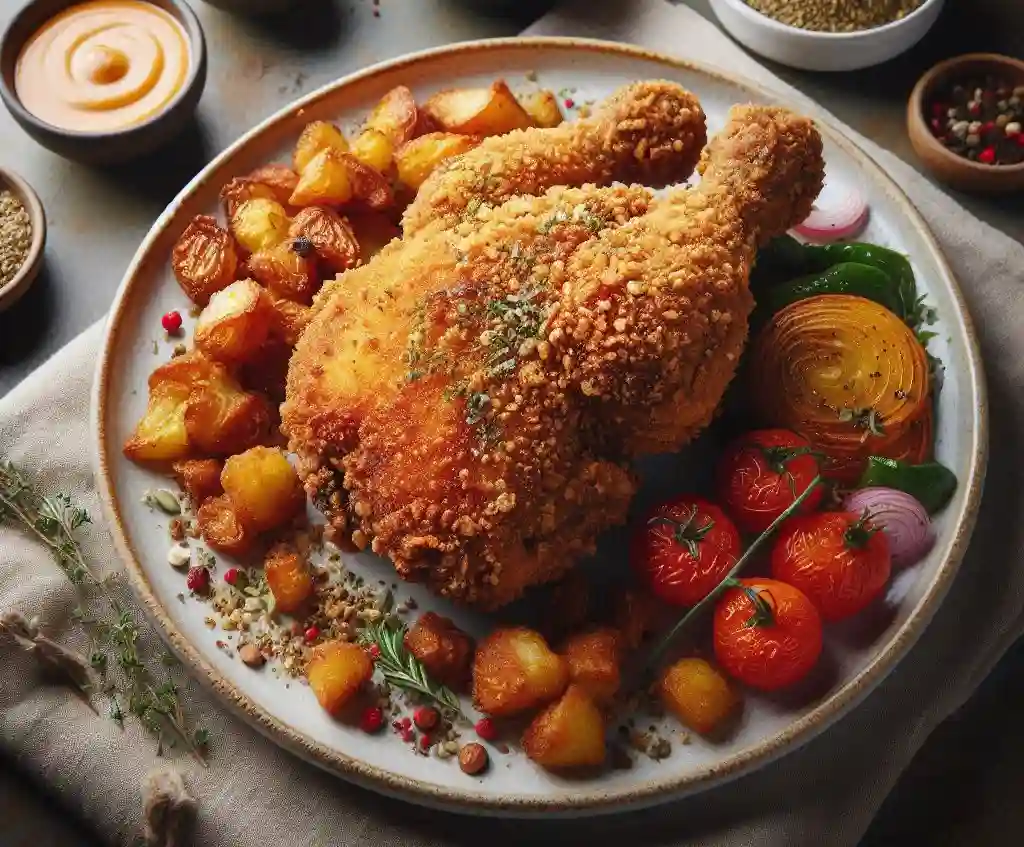
Issue: Soggy or Greasy Chicken
- Solution: Drain excess oil by placing the fried chicken on a paper towel-lined plate. Use a wire rack to allow air to circulate and prevent steam from building up.
- Tip: Pat dry the chicken before frying to remove excess moisture.
Issue: Breading Not Adhering
- Solution: Ensure the chicken is dry and free of excess moisture. Use a binding agent like egg whites or mayonnaise to help the breading adhere.
- Tip: Use a light hand when applying the breading to prevent excess breading from falling off.
Issue: Chicken Not Cooking Evenly
- Solution: Fry the chicken in batches to prevent overcrowding and ensure even cooking. Use a thermometer to maintain the optimal oil temperature.
- Tip: Don’t overcrowd the pot or fryer, as this can lower the oil temperature and prevent even cooking.
Issue: Oil Temperature Too High or Too Low
- Solution: Use a thermometer to monitor the oil temperature. Adjust the heat as needed to maintain the optimal temperature range (325°F – 375°F).
- Tip: Don’t leave the stove or fryer unattended, as the oil temperature can quickly become too high or too low.
Issue: Chicken Not Crispy Enough
- Solution: Increase the oil temperature to achieve a crisper exterior. Use a lighter breading or try double-frying for a crunchier exterior.
- Tip: Don’t over-fry the chicken, as this can make it greasy and soft.
Issue: Flavor Not Developing
- Solution: Use aromatics like garlic, ginger, or herbs to infuse the oil with flavor. Marinate the chicken before frying for added flavor.
- Tip: Experiment with different seasonings and spices to find the perfect flavor combination.
FAQs
Q: Why would I want to fry chicken without flour?
A: Frying chicken without flour can be a great option for those who are gluten-intolerant, watching their carb intake, or simply looking for a crispy exterior without the extra calories.
Q: What can I use as a substitute for flour?
A: There are several options, including cornstarch, panko breadcrumbs, potato starch, and even spices and herbs. The key is to find a coating that provides crunch without overpowering the flavor of the chicken.
Q: Will my chicken be crispy without flour?
A: Absolutely! With the right coating and frying technique, you can achieve a crispy exterior that’s just as satisfying as traditional fried chicken.
Q: Is frying chicken without flour healthier?
A: Depending on the coating you choose, frying chicken without flour can be a healthier option. For example, using spices and herbs as a coating can reduce the calorie and carb count significantly.
Q: Can I still achieve a crunchy coating without flour?
A: Yes! By using a combination of coatings and frying techniques, you can achieve a crunchy exterior that’s similar to traditional fried chicken.
Q: Are there any specific cooking techniques I need to know?
A: Yes, frying chicken without flour requires some adjustments to your cooking technique. We’ll cover the specifics in this post, including temperature control, cooking time, and more.

Amelia Winthrop is the creative force behind Skillful Cooking, a blog that serves as a canvas for her culinary creations. With a philosophy that cooking should be accessible and enjoyable, Amelia crafts recipes that blend simplicity with sophistication. Her intuitive approach to the kitchen encourages others to embrace the joy of cooking and the pleasure of sharing meals with loved ones.

